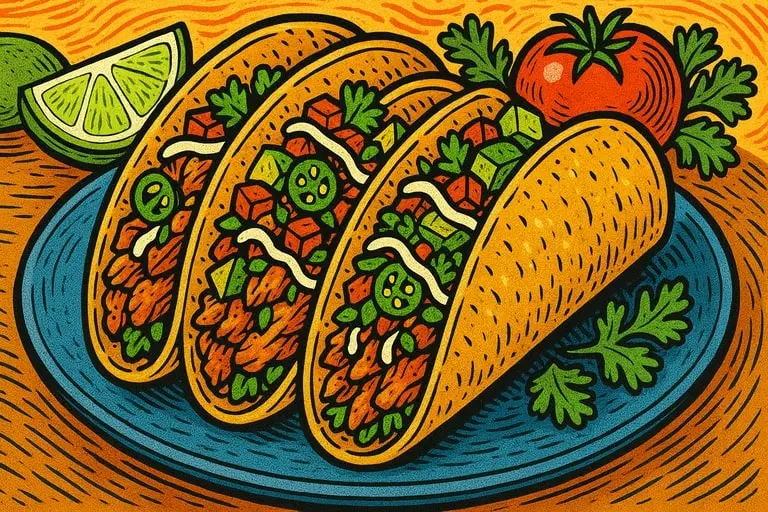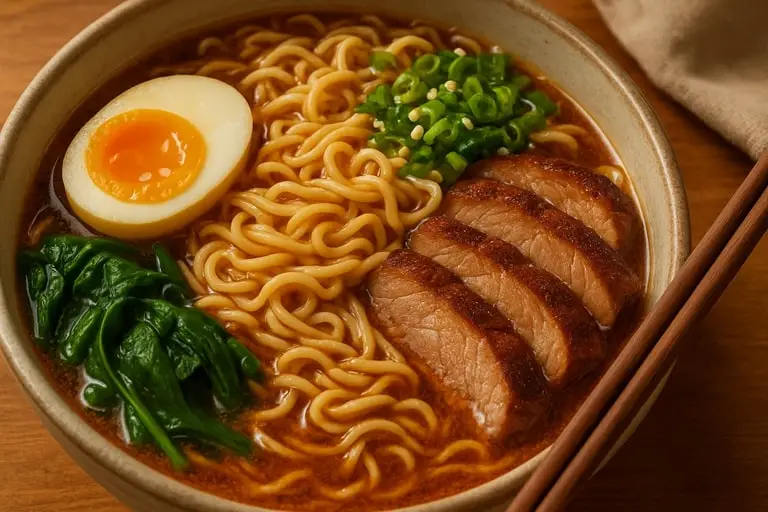Inspiring biographies of leaders are more than recaps of achievements; they are maps of decision-making, resilience, and values. When we read about the pivotal moments behind a breakthrough, we see the trial-and-error that headlines skip. This perspective turns admiration into action, offering tools that move us from passive interest to purposeful effort.
Readers across lifestyle, business, psychology, and culture pick up these books seeking practical insight wrapped in a human story. The best narratives thread context through each chapter—childhood influences, mentors, failures—and show how character forms under pressure. This is where authority is earned: through detail, nuance, and transparent sources that let us verify and trust what we learn.
Every compelling life story follows an arc—setup, struggle, turning point, and legacy—that mirrors how we craft our own success stories. We study how leaders frame setbacks, because reframing sparks creativity and stamina. Their strategies, whether for building teams or beating deadlines, become templates we can scale to our circumstances.
Culture and place shape a leader’s choices as much as talent does, and travel often broadens the canvas. A founder inspired by a crowded street market solves logistics differently than one schooled in quiet labs, and both angles matter. When we look beyond a shortlist of famous personalities, we encounter fresh playbooks drawn from cities, communities, and movements that rarely make the splashy lists.
In tech and business, these books unpack the quiet mechanics behind “overnight” results: hypotheses, prototypes, failures, course corrections, then momentum. They reveal leadership lessons that outlast any product cycle—listening before reacting, testing assumptions, and protecting focus. With that clarity, readers can adapt timeless principles to new tools and fast-changing markets.
Psychology threads through biographies because habits and emotions run every project we touch. We watch motivational figures regulate stress, get candid about doubt, and rebuild confidence after public mistakes. By seeing discipline in practice—sleep, exercise, reflection—we connect wellness with performance instead of treating them as separate lanes.
For book lovers, inspiring biographies for readers offer community as much as information. In clubs and classrooms, debate turns pages into practical experiments—try the meeting ritual, test the feedback script, redesign your week. Over time, a shelf of leaders inspiring biographies becomes a reference library you can open whenever a decision feels high-stakes and fuzzy.
Biographies of leaders inspiring readers across fields
Biographies of leaders inspiring change do their best work when they balance narrative and evidence. Dates, letters, speeches, and contemporaneous accounts keep a story grounded without draining its momentum. This blend of scene and source builds trust, allowing us to separate myth from method and to adopt only what stands up to scrutiny.
A recurring theme is how world-class performers make decisions under uncertainty. Many keep simple checklists, predefine thresholds for action, and archive lessons learned so mistakes are not repeated. The takeaway for us is to design systems that reduce noise and let values—not urgency—drive choices.
We also learn that strengths grow alongside constraints: limited budgets, skeptical boards, or shifting regulations. Leaders who embrace constraints write unconventional success stories, turning scarcity into a design feature. They teach us to ask better questions—What must be true? What can we cut?—so creativity has boundaries to push against.
Cultural fluency shows up everywhere in these pages, from grassroots organizing to global product launches. When leaders listen to local voices, they find signal in the static and avoid avoidable missteps. That humility translates to personal development for readers who want to lead without losing the room.
Outside boardrooms, artists, educators, chefs, and athletes illuminate how mastery feels from the inside. A choreographer’s rehearsal notes, an activist’s field journal, a gardener’s seasonal log—all offer transferable patterns. When we say biographies of leaders inspiring, we include these quieter professions where excellence compounds in the margins.
Technology evolves, but reading remains a competitive edge. Annotating a chapter can be more valuable than one more dashboard because it improves judgment, not just data access. By tracing cause and effect across years, we refine instincts that calculators cannot simulate.
If your shelves lean toward the familiar, rotate in voices beyond your industry and country. Curate a list that spans famous personalities and community builders who changed a block before they changed a nation. The range widens your toolkit, giving you more ways to respond when plans collide with reality.
Practical ways to use inspiring biographies of leaders for readers
Start by reading with a purpose: pick a theme—team building, crisis response, or focus—and chase it across multiple lives. Use a single notebook to capture quotes, decisions, and outcomes, then convert notes into one-page playbooks. Over time, you will assemble portable frameworks that outlive any single book.
Build a monthly ritual that alternates domains: business, arts, public service, science, and sport. This rotation keeps insights fresh and prevents echo chambers that can come from staying in one lane. When patterns repeat across fields, you have strong signals worth testing in your own work.
Turn highlights into experiments with clear start and end dates. If a chapter suggests a two-hour deep-work block, trial it for ten weekdays and log results. Treat the book as a lab partner, not a pedestal, and adapt tactics until they fit your schedule and energy.
Form a small reading circle with diverse roles—designer, teacher, manager, community organizer—so interpretation sharpens. Assign one person to summarize leadership lessons, one to challenge assumptions, and one to propose applications. The structure ensures each session ends with action items instead of mere admiration.
Translate narrative into health and habit upgrades, because stamina fuels strategy. Borrow a recovery routine or reflection practice from motivational figures, then set guardrails to sustain it. The goal is alignment: a life supported by habits that make high standards feel natural instead of heroic.
Share what you learn in lightweight formats: a newsletter digest, a lunch-and-learn, or a five-minute weekly voice memo. When you teach others about famous personalities and their pivotal decisions, you clarify your own. Teaching is also accountability—what you explain repeatedly tends to become what you live.
Finally, track which authors sharpen your thinking and which tempt you into procrastination by inspiration. Keep a living bibliography of inspiring biographies of leaders and tag entries by theme, depth, and practicality. With that index, you can reach for the right model at the right moment, turning reading into a renewable source of momentum.
Inspiring biographies of leaders are more than recaps of achievements; they are maps of decision-making, resilience, and values. When we read about the pivotal moments behind a breakthrough, we see the trial-and-error that headlines skip. This perspective turns admiration into action, offering tools that move us from passive interest to purposeful effort.
Readers across lifestyle, business, psychology, and culture pick up these books seeking practical insight wrapped in a human story. The best narratives thread context through each chapter—childhood influences, mentors, failures—and show how character forms under pressure. This is where authority is earned: through detail, nuance, and transparent sources that let us verify and trust what we learn.
Every compelling life story follows an arc—setup, struggle, turning point, and legacy—that mirrors how we craft our own success stories. We study how leaders frame setbacks, because reframing sparks creativity and stamina. Their strategies, whether for building teams or beating deadlines, become templates we can scale to our circumstances.
Culture and place shape a leader’s choices as much as talent does, and travel often broadens the canvas. A founder inspired by a crowded street market solves logistics differently than one schooled in quiet labs, and both angles matter. When we look beyond a shortlist of famous personalities, we encounter fresh playbooks drawn from cities, communities, and movements that rarely make the splashy lists.
In tech and business, these books unpack the quiet mechanics behind “overnight” results: hypotheses, prototypes, failures, course corrections, then momentum. They reveal leadership lessons that outlast any product cycle—listening before reacting, testing assumptions, and protecting focus. With that clarity, readers can adapt timeless principles to new tools and fast-changing markets.
Psychology threads through biographies because habits and emotions run every project we touch. We watch motivational figures regulate stress, get candid about doubt, and rebuild confidence after public mistakes. By seeing discipline in practice—sleep, exercise, reflection—we connect wellness with performance instead of treating them as separate lanes.
For book lovers, inspiring biographies for readers offer community as much as information. In clubs and classrooms, debate turns pages into practical experiments—try the meeting ritual, test the feedback script, redesign your week. Over time, a shelf of leaders inspiring biographies becomes a reference library you can open whenever a decision feels high-stakes and fuzzy.
Inspiring biographies of leaders inspiring readers across fields
Biographies of leaders inspiring change do their best work when they balance narrative and evidence. Dates, letters, speeches, and contemporaneous accounts keep a story grounded without draining its momentum. This blend of scene and source builds trust, allowing us to separate myth from method and to adopt only what stands up to scrutiny.
A recurring theme is how world-class performers make decisions under uncertainty. Many keep simple checklists, predefine thresholds for action, and archive lessons learned so mistakes are not repeated. The takeaway for us is to design systems that reduce noise and let values—not urgency—drive choices.
We also learn that strengths grow alongside constraints: limited budgets, skeptical boards, or shifting regulations. Leaders who embrace constraints write unconventional success stories, turning scarcity into a design feature. They teach us to ask better questions—What must be true? What can we cut?—so creativity has boundaries to push against.
Cultural fluency shows up everywhere in these pages, from grassroots organizing to global product launches. When leaders listen to local voices, they find signal in the static and avoid avoidable missteps. That humility translates to personal development for readers who want to lead without losing the room.
Outside boardrooms, artists, educators, chefs, and athletes illuminate how mastery feels from the inside. A choreographer’s rehearsal notes, an activist’s field journal, a gardener’s seasonal log—all offer transferable patterns. When we say biographies of leaders inspiring, we include these quieter professions where excellence compounds in the margins.
Technology evolves, but reading remains a competitive edge. Annotating a chapter can be more valuable than one more dashboard because it improves judgment, not just data access. By tracing cause and effect across years, we refine instincts that calculators cannot simulate.
If your shelves lean toward the familiar, rotate in voices beyond your industry and country. Curate a list that spans famous personalities and community builders who changed a block before they changed a nation. The range widens your toolkit, giving you more ways to respond when plans collide with reality.
Practical ways to use inspiring biographies for readers
Start by reading with a purpose: pick a theme—team building, crisis response, or focus—and chase it across multiple lives. Use a single notebook to capture quotes, decisions, and outcomes, then convert notes into one-page playbooks. Over time, you will assemble portable frameworks that outlive any single book.
Build a monthly ritual that alternates domains: business, arts, public service, science, and sport. This rotation keeps insights fresh and prevents echo chambers that can come from staying in one lane. When patterns repeat across fields, you have strong signals worth testing in your own work.
Turn highlights into experiments with clear start and end dates. If a chapter suggests a two-hour deep-work block, trial it for ten weekdays and log results. Treat the book as a lab partner, not a pedestal, and adapt tactics until they fit your schedule and energy.
Form a small reading circle with diverse roles—designer, teacher, manager, community organizer—so interpretation sharpens. Assign one person to summarize leadership lessons, one to challenge assumptions, and one to propose applications. The structure ensures each session ends with action items instead of mere admiration.
Translate narrative into health and habit upgrades, because stamina fuels strategy. Borrow a recovery routine or reflection practice from motivational figures, then set guardrails to sustain it. The goal is alignment: a life supported by habits that make high standards feel natural instead of heroic.
Share what you learn in lightweight formats: a newsletter digest, a lunch-and-learn, or a five-minute weekly voice memo. When you teach others about famous personalities and their pivotal decisions, you clarify your own. Teaching is also accountability—what you explain repeatedly tends to become what you live.
Finally, track which authors sharpen your thinking and which tempt you into procrastination by inspiration. Keep a living bibliography of inspiring biographies of leaders and tag entries by theme, depth, and practicality. With that index, you can reach for the right model at the right moment, turning reading into a renewable source of momentum.
Inspiring biographies of leaders are more than recaps of achievements; they are maps of decision-making, resilience, and values. When we read about the pivotal moments behind a breakthrough, we see the trial-and-error that headlines skip. This perspective turns admiration into action, offering tools that move us from passive interest to purposeful effort.
Readers across lifestyle, business, psychology, and culture pick up these books seeking practical insight wrapped in a human story. The best narratives thread context through each chapter—childhood influences, mentors, failures—and show how character forms under pressure. This is where authority is earned: through detail, nuance, and transparent sources that let us verify and trust what we learn.
Every compelling life story follows an arc—setup, struggle, turning point, and legacy—that mirrors how we craft our own success stories. We study how leaders frame setbacks, because reframing sparks creativity and stamina. Their strategies, whether for building teams or beating deadlines, become templates we can scale to our circumstances.
Culture and place shape a leader’s choices as much as talent does, and travel often broadens the canvas. A founder inspired by a crowded street market solves logistics differently than one schooled in quiet labs, and both angles matter. When we look beyond a shortlist of famous personalities, we encounter fresh playbooks drawn from cities, communities, and movements that rarely make the splashy lists.
In tech and business, these books unpack the quiet mechanics behind “overnight” results: hypotheses, prototypes, failures, course corrections, then momentum. They reveal leadership lessons that outlast any product cycle—listening before reacting, testing assumptions, and protecting focus. With that clarity, readers can adapt timeless principles to new tools and fast-changing markets.
Psychology threads through biographies because habits and emotions run every project we touch. We watch motivational figures regulate stress, get candid about doubt, and rebuild confidence after public mistakes. By seeing discipline in practice—sleep, exercise, reflection—we connect wellness with performance instead of treating them as separate lanes.
For book lovers, inspiring biographies for readers offer community as much as information. In clubs and classrooms, debate turns pages into practical experiments—try the meeting ritual, test the feedback script, redesign your week. Over time, a shelf of leaders inspiring biographies becomes a reference library you can open whenever a decision feels high-stakes and fuzzy.
Biographies of leaders inspiring readers across fields
Biographies of leaders inspiring change do their best work when they balance narrative and evidence. Dates, letters, speeches, and contemporaneous accounts keep a story grounded without draining its momentum. This blend of scene and source builds trust, allowing us to separate myth from method and to adopt only what stands up to scrutiny.
A recurring theme is how world-class performers make decisions under uncertainty. Many keep simple checklists, predefine thresholds for action, and archive lessons learned so mistakes are not repeated. The takeaway for us is to design systems that reduce noise and let values—not urgency—drive choices.
We also learn that strengths grow alongside constraints: limited budgets, skeptical boards, or shifting regulations. Leaders who embrace constraints write unconventional success stories, turning scarcity into a design feature. They teach us to ask better questions—What must be true? What can we cut?—so creativity has boundaries to push against.
Cultural fluency shows up everywhere in these pages, from grassroots organizing to global product launches. When leaders listen to local voices, they find signal in the static and avoid avoidable missteps. That humility translates to personal development for readers who want to lead without losing the room.
Outside boardrooms, artists, educators, chefs, and athletes illuminate how mastery feels from the inside. A choreographer’s rehearsal notes, an activist’s field journal, a gardener’s seasonal log—all offer transferable patterns. When we say biographies of leaders inspiring, we include these quieter professions where excellence compounds in the margins.
Technology evolves, but reading remains a competitive edge. Annotating a chapter can be more valuable than one more dashboard because it improves judgment, not just data access. By tracing cause and effect across years, we refine instincts that calculators cannot simulate.
If your shelves lean toward the familiar, rotate in voices beyond your industry and country. Curate a list that spans famous personalities and community builders who changed a block before they changed a nation. The range widens your toolkit, giving you more ways to respond when plans collide with reality.
Practical ways to use inspiring biographies for readers
Start by reading with a purpose: pick a theme—team building, crisis response, or focus—and chase it across multiple lives. Use a single notebook to capture quotes, decisions, and outcomes, then convert notes into one-page playbooks. Over time, you will assemble portable frameworks that outlive any single book.
Build a monthly ritual that alternates domains: business, arts, public service, science, and sport. This rotation keeps insights fresh and prevents echo chambers that can come from staying in one lane. When patterns repeat across fields, you have strong signals worth testing in your own work.
Turn highlights into experiments with clear start and end dates. If a chapter suggests a two-hour deep-work block, trial it for ten weekdays and log results. Treat the book as a lab partner, not a pedestal, and adapt tactics until they fit your schedule and energy.
Form a small reading circle with diverse roles—designer, teacher, manager, community organizer—so interpretation sharpens. Assign one person to summarize leadership lessons, one to challenge assumptions, and one to propose applications. The structure ensures each session ends with action items instead of mere admiration.
Translate narrative into health and habit upgrades, because stamina fuels strategy. Borrow a recovery routine or reflection practice from motivational figures, then set guardrails to sustain it. The goal is alignment: a life supported by habits that make high standards feel natural instead of heroic.
Share what you learn in lightweight formats: a newsletter digest, a lunch-and-learn, or a five-minute weekly voice memo. When you teach others about famous personalities and their pivotal decisions, you clarify your own. Teaching is also accountability—what you explain repeatedly tends to become what you live.
Finally, track which authors sharpen your thinking and which tempt you into procrastination by inspiration. Keep a living bibliography of inspiring biographies of leaders and tag entries by theme, depth, and practicality. With that index, you can reach for the right model at the right moment, turning reading into a renewable source of momentum.













